My application has a business logic layer, and a data access layer. I want to give only the data access layer access to the database model. Now, I can easily do this, but then my UI classes cannot access the database classes like Reminder:
namespace Database
{
using System;
using System.Collections.Generic;
public partial class Reminder
{
public long Id { get; set; }
public string Name { get; set; }
public string Date { get; set; }
public string RepeatType { get; set; }
public string Note { get; set; }
public long Enabled { get; set; }
public string SoundFilePath { get; set; }
public string PostponeDate { get; set; }
public Nullable<long> EveryXCustom { get; set; }
public string RepeatDays { get; set; }
public Nullable<long> DayOfMonth { get; set; }
}
}
which is inside the database class library
I use this reminder class to store reminders. In my UI classes I use this class for various reasons.
To make use of this Reminder class, I simply add a reference to the class library that needs to use it. This works fine, but the problem is that every class library that references this, can alter the database like this.
If I'm not using Entity Framework, I could simply have a Reminder class outside the model (because there is no model) and load reminders from the database into that and extract them without using Entity Framework.
Here's an example of why I need to use the Reminder class in my UI classes (this is just a small code sample of one UI class)
This code is inside a timer that ticks every 30 seconds
// We will check for reminders here every 30 seconds.
foreach (Reminder rem in BLReminder.GetReminders())
{
// Create the popup. Do the other stuff afterwards.
if(rem.PostponeDate != null && Convert.ToDateTime(rem.PostponeDate) <= DateTime.Now && rem.Enabled == 1)
{
allowRefreshListview = true;
// temporarily disable it. When the user postpones the reminder, it will be re-enabled.
rem.Enabled = 0;
BLReminder.EditReminder(rem);
MakePopup(rem);
}
else if(Convert.ToDateTime(rem.Date.Split(',')[0]) <= DateTime.Now && rem.PostponeDate == null && rem.Enabled == 1)
{
allowRefreshListview = true;
// temporarily disable it. When the user postpones the reminder, it will be re-enabled.
rem.Enabled = 0;
BLReminder.EditReminder(rem);
MakePopup(rem);
}
}
GetReminders will do get the reminders from the database and put them in reminder objects
using (RemindMeDbEntities db = new RemindMeDbEntities())
{
localReminders = (from g in db.Reminder select g).ToList();
db.Dispose();
}
